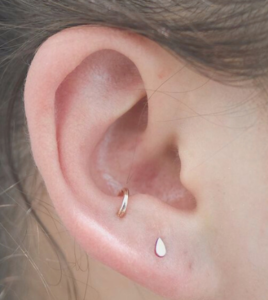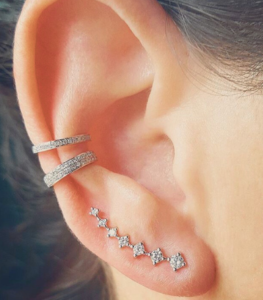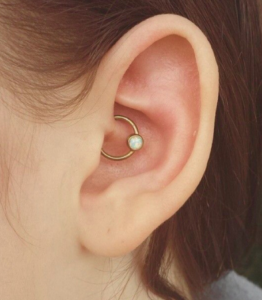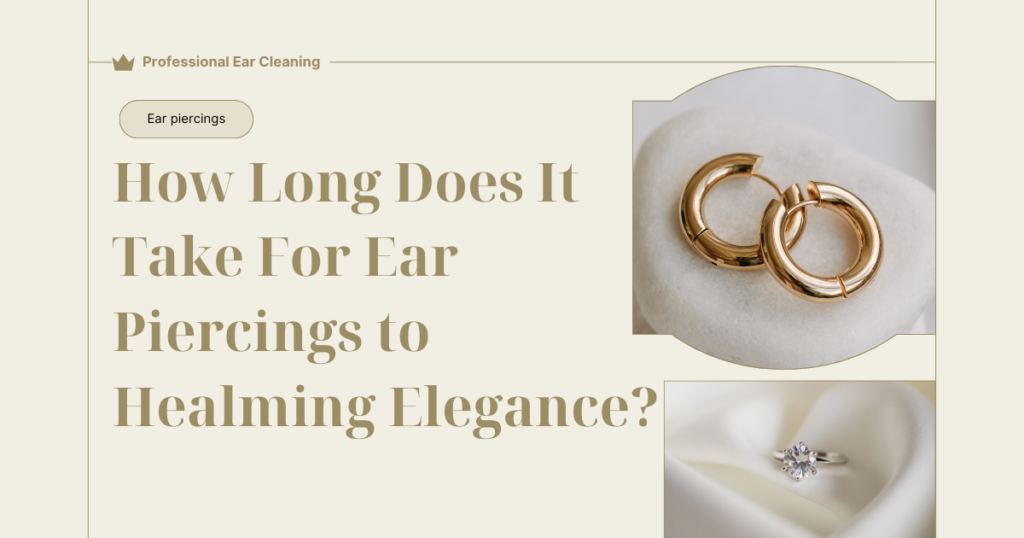Navigating the world of ear piercings can be exciting yet overwhelming, especially with the diverse options available. Whether you’re considering your first piercing or looking to expand your collection, understanding the various types of ear piercings is key to making an informed choice. This comprehensive ear piercings chart will guide you through the most popular and unique piercings, from the classic lobe to the intricate industrial. By the end of this article, you’ll have a clearer picture of which piercing suits your style and lifestyle best. Let’s embark on this journey to discover the perfect ear piercing for you!
Types of Ear Piercings
1. Lobe Piercing

The lobepiercing is the most traditional and widely known piercing, often the first for many. Located in the soft, lower part of the ear, it’s generally less painful and heals quickly. This piercing is highly versatile, allowing for various styles and additional piercings in the upper lobe area if desired.
2. Transverse Lobe Piercing

A unique twist on the standard lobe piercing, the transverse lobe piercing involves a barbell going horizontally through the earlobe. This placement offers a distinctive look with balls on either side of the lobe, creating a striking visual effect.
3. Tragus Piercing

The tragus piercing sits on the small cartilage flap that partially covers your ear canal. You can choose to have it done with either a stud or a hoop. While it tends to be more painful than lobe piercings because of the cartilage, it offers a distinctive and stylish look.
4. Anti-Tragus Piercing

The anti-tragus piercing sits just above the earlobe on the cartilage ridge. Typically done with a hoop or barbell, this piercing is a bit more painful than others due to the thicker cartilage. Before getting it, make sure there’s enough space, especially if you have stretched lobes.
5. Orbital Piercing

An orbital piercing connects two holes with a single piece of jewelry, like a small hoop or circular barbell. You can place this piercing in various locations, such as the helix or the tragus-to-conch area, giving you plenty of customization options.
6. Snug Piercing

The snug piercing runs horizontally above the anti-tragus, making it visible from the front of the ear. Not all ears are suitable for this piercing due to space constraints, so a consultation with your piercer is essential to ensure it’s feasible.
7. Rook Piercing

A rook piercing is placed through the upper cartilage of the ear, just above the daith. It sits on the ridge between the inner and outer parts of the upper ear. This piercing typically requires a barbell or hoop and takes longer to heal, usually between six to twelve weeks.
8. Conch Piercing

The conch piercing goes through the thick cartilage of the ear’s inner or outer shell. It’s known for its bold look but requires a longer healing time, typically six to nine months, and demands regular cleaning to avoid infection.
9. Daith Piercing
 The daith piercing sits in the cartilage fold near the ear canal. Many people choose it for its potential benefits in alleviating migraines, although these claims aren’t universally supported. Typically, you’ll see this piercing adorned with a hoop, adding a stylish touch.
The daith piercing sits in the cartilage fold near the ear canal. Many people choose it for its potential benefits in alleviating migraines, although these claims aren’t universally supported. Typically, you’ll see this piercing adorned with a hoop, adding a stylish touch.
10. Helix Piercing

Any piercing on the upper cartilage of the ear falls under the helix category. It’s a popular choice due to its visibility and the variety of jewelry options available. Helix piercings can be done in several positions along the cartilage.
11. Forward Helix Piercing

12. Industrial Piercing

An industrial piercing consists of two holes connected by a single barbell, usually through the upper cartilage of the ear. It involves a more complex healing process due to the dual piercings and the barbell’s movement.
Comparative Table of Ear Piercings Type & Healing Time
| Piercing Type | Location | Healing Time | Pain Level |
|---|---|---|---|
| Lobe | Lower part of the ear | 6-8 weeks | Low |
| Transverse Lobe | Horizontal through the earlobe | 6-8 weeks | Moderate |
| Tragus | Cartilage partially covering the ear canal | 6-12 months | Moderate |
| Anti-Tragus | Cartilage ridge above the earlobe | 6-12 months | High |
| Orbital | Two holes connected by a single jewelry piece | 6-12 months | Moderate |
| Snug | Horizontal above the anti-tragus | 6-12 months | High |
| Rook | Upper cartilage between the inner and outer ear | 6-12 weeks | Moderate |
| Conch | Inner or outer shell of the ear cartilage | 6-9 months | High |
| Daith | Cartilage fold near the ear canal | 6-12 months | Moderate |
| Helix | Upper cartilage of the ear | 6-12 months | Moderate |
| Forward Helix | Upper, outer cartilage near the face | 3-9 months | Moderate |
| Industrial | Two piercings connected by a barbell | 6-12 months | High |
Exploring different types of ear piercings can help you find the perfect match for your style and personality. Whether you’re drawn to the classic lobe or the unique industrial, each option offers a distinct look and requires specific care. This ear piercings chart is your go-to guide for navigating all the possibilities. Ready to get started? Chat with a professional piercer, explore your options, and take that first step toward your new look!


